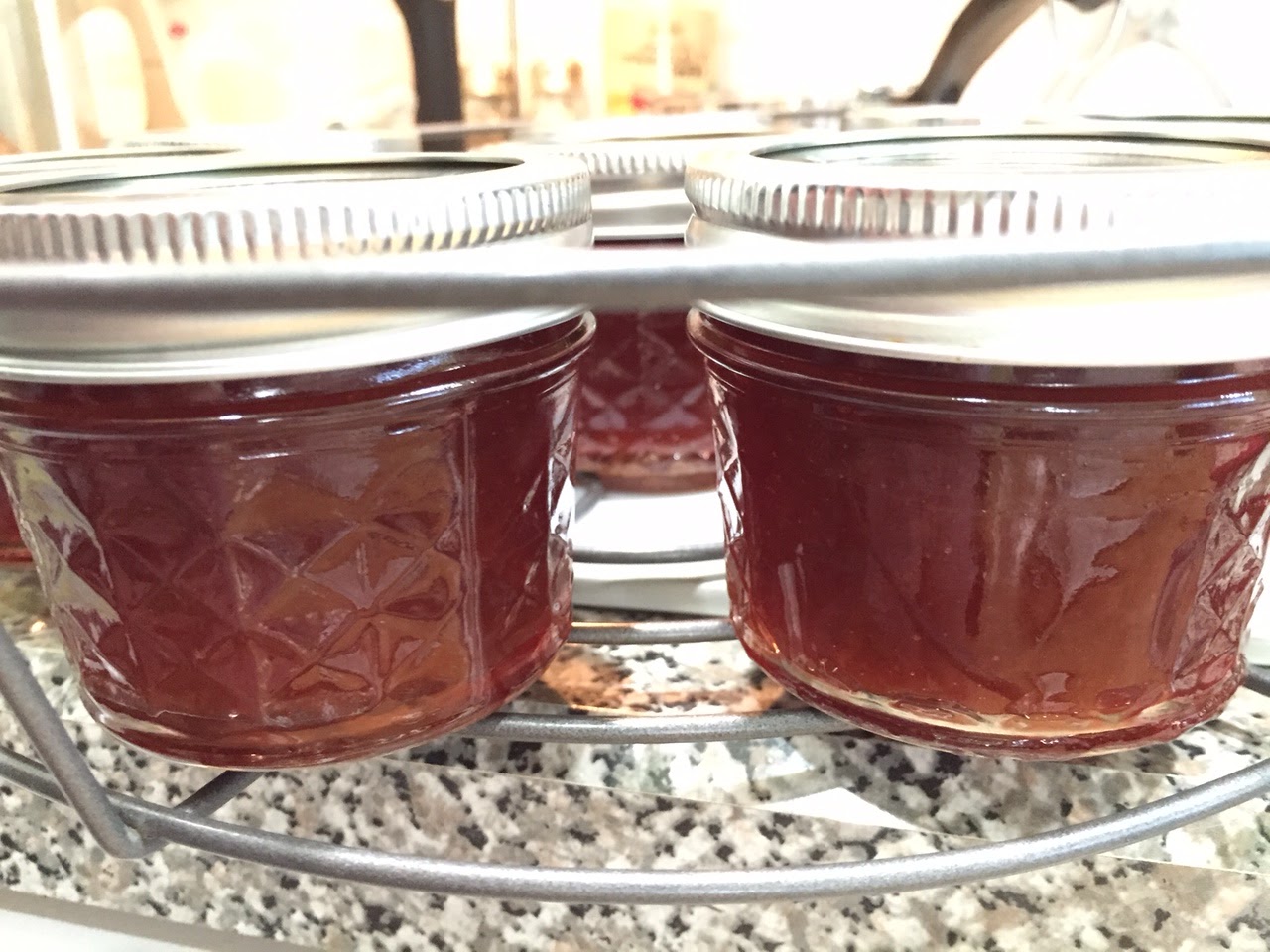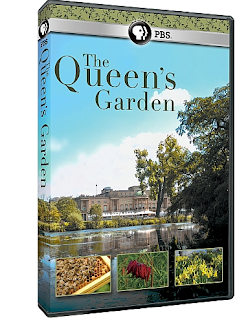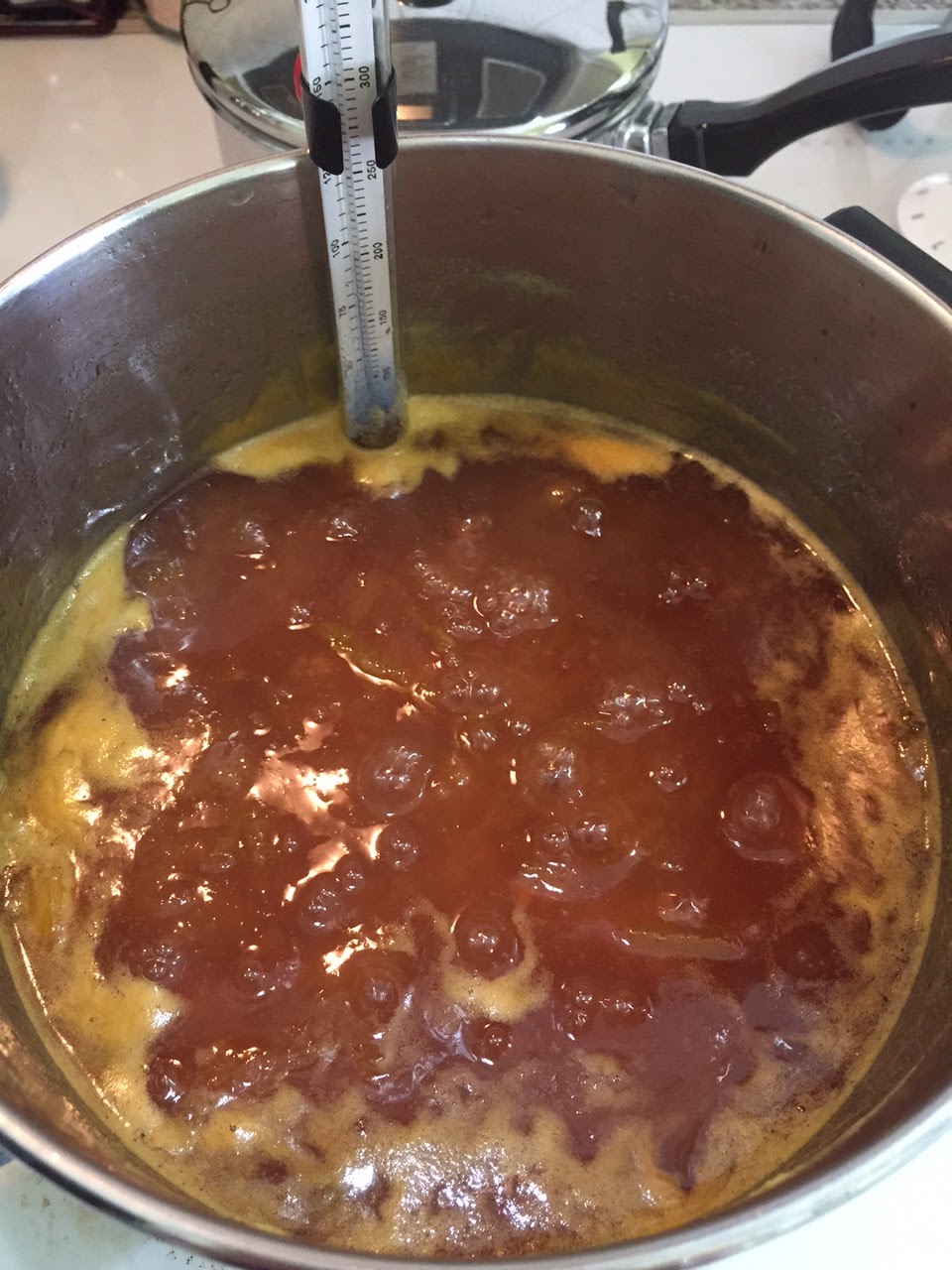 |
| 26 pounds of Shiro plums! |
It's been a little plum crazy in our home the last few weeks.
That's because this year, our Shiro plum tree produced 26 pounds of edible fruit!
This has been the best year for the tree so far since I've had it in my garden (I planted it in 2012 as a pollinator for Satsuma, which hasn't been nearly as prolific). I did lose some plums to garden critters such as birds and squirrels and some fruit split due to the very dry spring and then sudden heavy rain in early July, but overall, I have more fruit than I know what to do with.
The fruit can be picked when it's firm and still a little green. It's ripe when it turns a bright yellow. (
Read more here.) There's only so many fresh plums I can eat, so instead of them going to waste, I've been making jam and pastries from the fruit. (They've also been given away to neighbors as I run into them. "Hi! How are you? Here are some plums.")
I've learned a lot since I first made Shiro plum jam two years ago. The original recipe I used did not call for pectin or an additional acid. When I first made it, I had doubled the recipe (from 3 pounds to 6 pounds) and I feel that I did not cook it long enough, which is why it turned out to be a runny plum sauce instead.
This year, I decided to experiment with a different recipe. I borrowed many books from the library, and I've been happiest so far with
"Put 'em up! Fruit: A Preserving Guide and Cookbook" by Sherri Brooks Vinton (2013). I think the key that I learned through my readings was to
boil the shiro plums with the water first for about 20 minutes. This helps the skin break down. This was a step I didn't do in the past, and while it makes the process longer, I feel that it is worth the extra time.
Today I made my third batch of plum jam using Vinton's classic plum jam recipe, which yields between eight and nine jelly jars when complete (depending on how ripe the plums are). I start out with more plums then Vinton calls for, but after they are depitted and chopped, I end up with the right amount. I have a ceramic cooktop stove that I prepare my jam on, so for me it takes about two hours to get to the dark amber bubbling jam that I like (Vinton's book says it will take 20-30 minutes). The jam gets close to 220 F when I pull it to do the wrinkle test and the sheeting test. Once I fill my jars, I leave about 1/4 inch headroom from the top. I then use the hot water method to process my jars for 10 minutes and wait for them to seal.
 |
| Shiro plum jam ready for processing. |
 |
Any jam that doesn't seal after processing is placed in the fridge and eaten
within two weeks. I love the amber color that the jam becomes when cooking. |
 |
| Shiro plum pastries, hot from the oven. |
In addition to Shiro plum jam, I've been making a puff pastry with the plums as well with a recipe I found via
Serious Eats. I skipped the making the puff pastry dough step and took a frozen puff pastry sheet and divided it into three. I used more plums then the
recipe called for, since my plums appear to be smaller. I baked mine for about 20 minutes at 400 degrees F, or until it looks "golden brown delicious." I bet it would be great warm with a scoop of vanilla ice cream.
An optional step is garnishing it when it cools, which is a step I did often when I worked in the bakery. One way is with a powdered sugar glaze (just mix powdered sugar with water until it comes together - you don't want it to be too runny) or dust it with powdered sugar using a sifter. The Shiro plums seemed to get a little more tart when cooking, so adding a little sugar or glaze after baking might help with this!







































